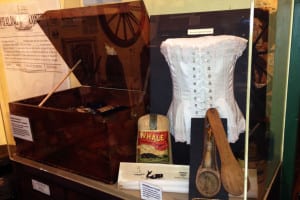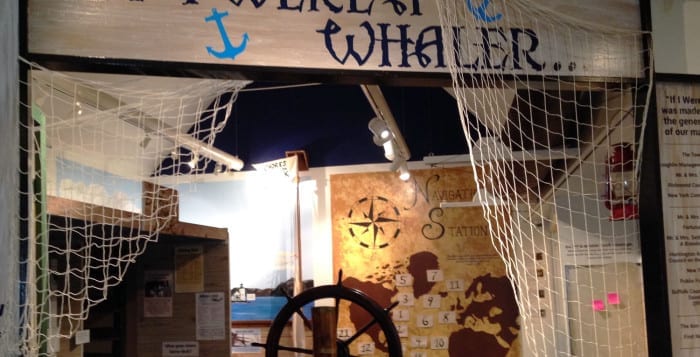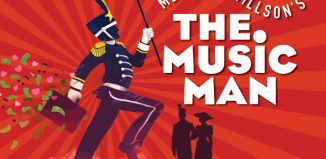New exhibit voyages into life of a whaler
By Rita J. Egan
The Whaling Museum & Education Center of Cold Spring Harbor introduced its new interactive, hands-on exhibit, If I Were a Whaler, on Sunday, Sept. 27. The exhibit launched off with the opening day event SeaFaire featuring craft-makers, including a woodworker, quilter and spinner, demonstrating their old world skills. The day also gave visitors the opportunity to create historical maritime crafts such as ship models and scrimshaw carvings.
Judy Palumbo, community relations and development manager at the museum, said the committee designed the exhibit to give guests a strong sense of what life was like on a whaling boat for the whalers. She said exhibit goers will discover how simply the seamen lived and how minimal their supplies were. According to Palumbo, some would have only a tiny trunk for a three-year voyage, and on the boat, they would sleep in tight quarters that also doubled as a place to eat since there were no dining halls.
“We’re just trying to give people a picture of what life on the ship was like … a whaler’s life,” Palumbo said.

The community relations and development manager said the exhibit is extremely interactive and exhibit goers can experience each stage of a whaler’s journey. One interactive station is a general store where children are given coins to purchase items, and while deciding what to buy for their voyage, learn how limited the seamen’s budgets were.
Executive Director Nomi Dayan said the store is based on Jones General Store, which once operated in Cold Spring Harbor. She said children can decide things such as if they are going to get an extra warm pair of pants or two shirts.
“They really have to think critically about what it took to endure life at sea,” Dayan said.
At the second station, visitors will discover what life was like under the decks for the whalers. Children can try out a berth and view the limited food options the whalers had at sea.
“I think one of the most fun things about it is the bunk bed where you can climb in and realize how little personal space you had,” Dayan said.
Another interactive station will show visitors what it was like to raise the sails or swab the deck, which was also referred to as holystoning, where they actually cleaned the decks with stones, according to Palumbo. The community relations and development manager said the station demonstrates the whalers’ responsibilities during their voyages.
Children can learn how to plan a voyage as well at the navigation stage and, based on their choices, find out their fate. Destinies include being shipwrecked or catching a whale among other outcomes.
Exhibit goers will discover how the whalers spent their free time, too. Palumbo explained that catching whales only used a small percentage of the whalers’ time spent at sea since the mammals weren’t that easy to catch. Maps are also on display showing the seamen’s journeys that included expeditions to the Arctic, South America and the Hawaiian Islands.
Complementing the interactive stations will be nautical tools and artifacts on display from the museum’s collection, which totals 6,000 pieces. Palumbo said the museum owns one of the largest scrimshaw collections in the Northeast and one of the last fully equipped whaling boats.
Palumbo said construction of If I Were a Whaler began Labor Day weekend; however, the museum’s educators Cyndi Grimm, Liz Fusco, Gina Van Bell, Amanda Vengroff, as well as Dayan and carpenter Peter Schwind have been working on the exhibit for months.
Dayan said the plan right now is to display If I Were a Whaler for two years. She said she believes the interactive exhibit, which was inspired by the USS Constitution Museum in Boston’s A Sailor’s Life for Me: War of 1812 curriculum, will provide children an understanding of maritime history that they may not get from a textbook or by just looking at an artifact in a museum.
“We hope families will gain a much better appreciation and understanding of local history, and we hope that will happen through making history come to life,” Dayan said.
The Whaling Museum & Education Center of Cold Spring Harbor is located at 301 Main Street, Cold Spring Harbor. Admission is $6 for adults and $5 for children. For more information, visit www.cshwhalingmuseum.org or call 631-367-3418.







